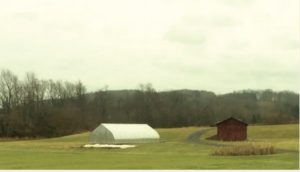Building on the Unique Qualities of Rural Schools to Advance College and Career Readiness
by Amanda J. Lester
The unique characteristics of rural school districts and their surrounding communities present both challenges and opportunities for rural school educators. Some of the challenges faced by educators in rural school communities are similar to those faced in urban schools, such as insufficient funding for programs and staff. Yet, educators in rural schools face some unique context-specific challenges when seeking the supports needed for students to become college and career ready.
Challenges and Opportunities in Rural Education
Among the challenges most often cited as impacting rural schools, several stand out including: (1) recruiting and retaining highly effective teachers in what are sometimes remote areas; (2) having fewer and more distant student and family support services available; and (3) problems coordinating services due to the challenge of distance and more limited options.
These challenges can also magnify other barriers to preparing youth for college and careers, such as the provision of opportunities for students to engage in more advanced coursework or participate in experiential learning opportunities such as internships. However, in spite of these difficulties, rural schools often also have access to unique opportunities that educators and school leaders can draw upon to improve students’ preparation for life beyond high school.
A recent blog published by the American Institutes for Research (AIR) focuses on some of these opportunities, and in particular, notes the importance of capitalizing on the relational assets typically found within tight-knit rural communities. This quality of rural schools was also discussed in a related AIR blog, which further emphasized the value of “small but mighty networks” in rural communities where the majority of town members likely went to the same school and know each other. Because of these experiences, rural community members are more likely to invest time and energy in supporting their local school.
Building on Opportunities: Lessons from Rural Odds-Beating Schools
In the NYKids College and Career Readiness study, some of the practices reported by educators at rural odds-beating schools offer insight into how leaders and educators create opportunities for youth by drawing upon local resources.

As a case in point, Crown Point Central School, an odds-beating school located in rural upstate New York, serves as a hub for their community. Staff members often reference how being a part of a tight-knit community facilitates their student-centered approach.
Growing up in a small town, growing up with family, many [students] have those family values if you will, and connections not just to the town but to each other. -Crown Point teacher
I have often heard it described as a family. Because we are so small, it is hard not to know anybody, so everybody knows everybody by name usually. There are a lot of hellos in the hallways…because our students have to come through this side of the building to get to gym for example, you see the older students saying hi to the younger students by name even if they are not related. – Crown Point student support staff
Key take-away: Rural school leaders and staff can purposefully leverage the tight-knit nature of their communities to reinforce a feeling of “family” that extends beyond the school and enables student-centered approaches in and out of the classroom to keep youth engaged and active learners.
At Maple Grove Jr-Sr. High School, located in rural Western New York, collaboration among staff and with members of the community is part of an intentional effort to support teachers and coordinate their work.
I’m constantly listening to what [teachers] need, and then I’ll be the person behind the scenes to get in what they need…And always, we are supposed to learn. How can we keep the teachers learning, and keep them active? -Maple Grove district leader
Our work with [high school staff] is the idea that you’ve got to tear down the old (this is my subject, my way of doing it) and really build that collaborative atmosphere. There are pockets of [interdisciplinary collaboration] . . . the [Advanced Placement (AP)] Physics and Calculus teacher, for instance, work very closely together with their two programs because they do some things that support each other. – Maple Grove superintendent
Key take-away: Rural school leaders can use their relatively small size to stay closely connected with teachers to better meet their needs, and teachers can support each other by collaborating consistently as they work on curriculum and share instructional tips and materials.
At Sherburne-Earlville Sr. High School, located in New York’s Southern Tier, connections with families and community members and a focus on student engagement are central commitments. To do this, leaders and educators have included high-interest content (such as in agriculture) that fit with their community and its economy.
I just think that we all have the same goal in mind, and this place seems really committed, whatever that is going to look like, for each kid – but really committed to trying to get kids to where they need to be and get families what they need. – Sherburne Earlville student support professional
Key take-away: Rural school educators can offer opportunities (e.g. farming on the school’s lands) and craft course content that engages youth and fits with the community’s needs.
To learn more about how rural odds-beating schools like Crown Point, Maple Grove, and Sherburne-Earlville build on unique opportunities to address rural school challenges, visit the NYKids’ Research Results webpage to read the College and Career Readiness Cross-Case Report, as well as school case studies. And stay tuned for new findings as the NYKids team returns to some of these rural schools to get students’ perspectives.


